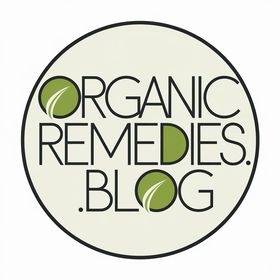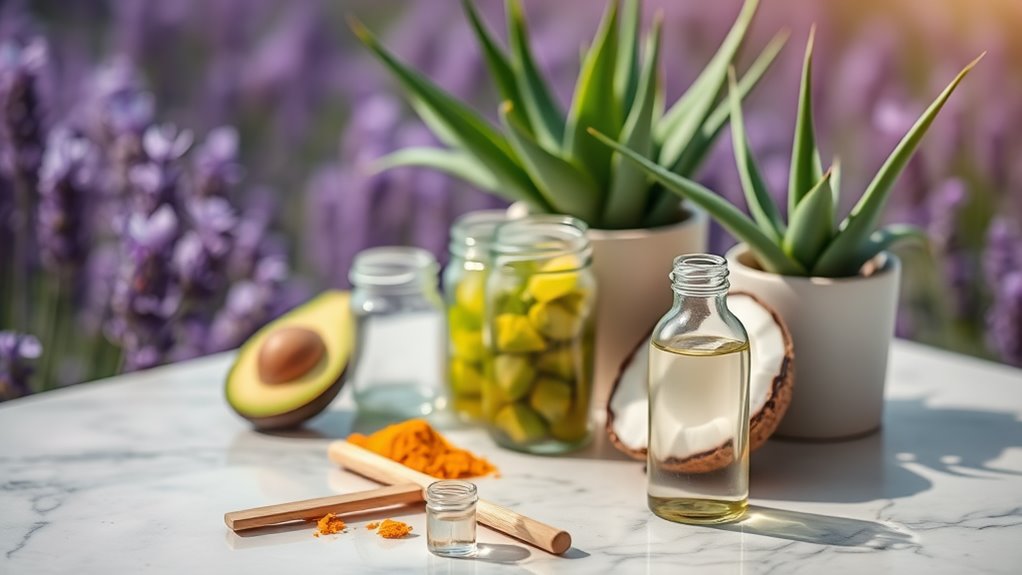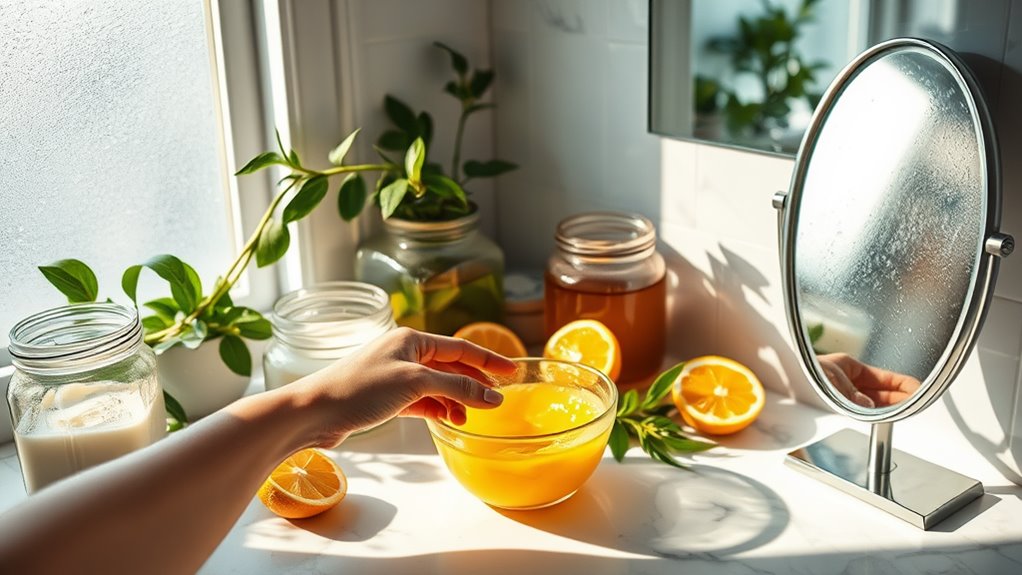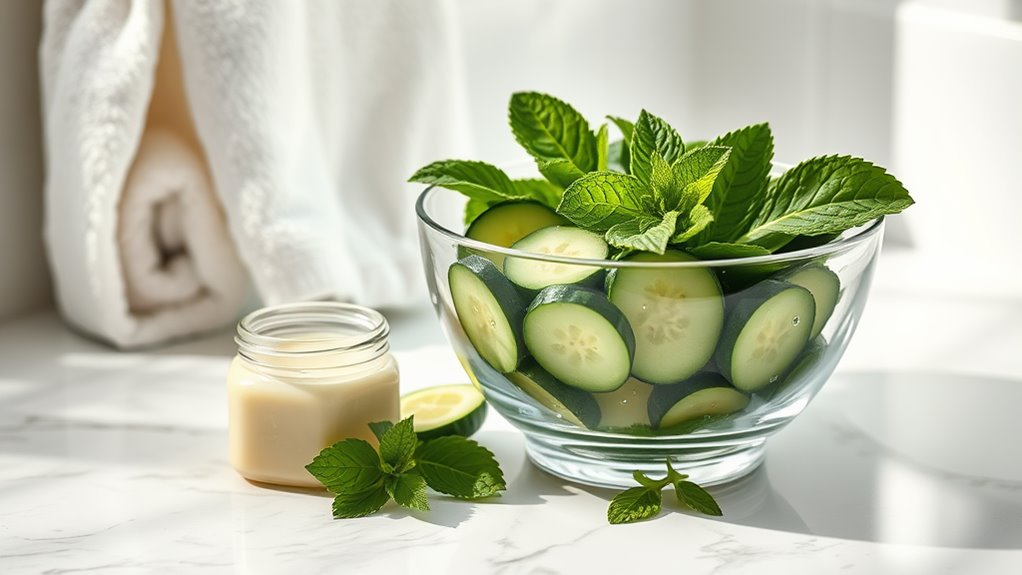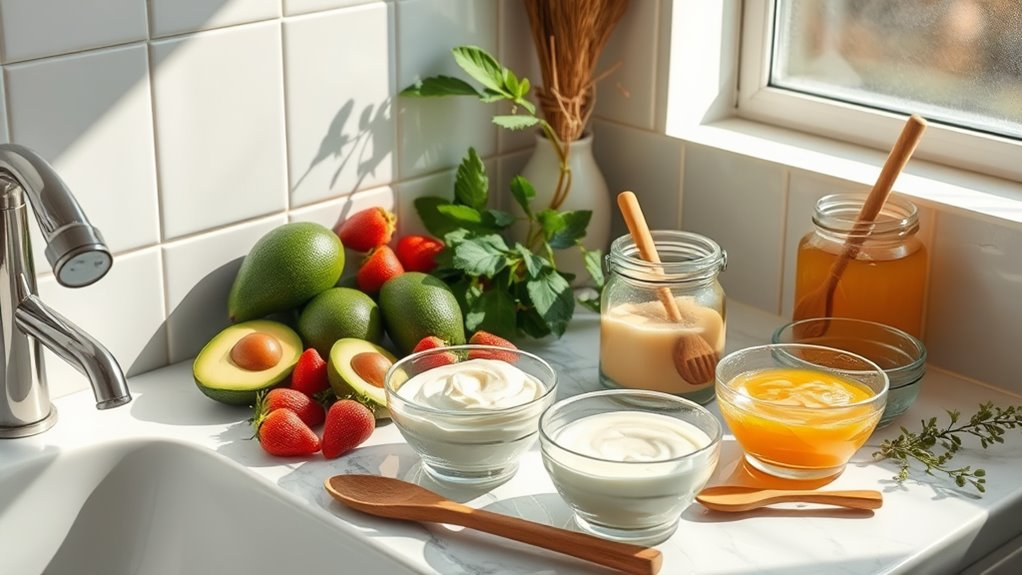Heal Cracked Lips Overnight With This Simple DIY Balm
You can quickly heal your cracked lips overnight with this simple DIY balm featuring beeswax to lock in moisture, coconut oil to soothe dryness, shea butter for nourishing vitamins, vitamin E oil for antioxidant repair, and honey for antibacterial hydration. Just melt the ingredients together in a double boiler, mix well, and apply a pea-sized amount before bed for rapid results. This evidence-based remedy minimizes inflammation and cracking, so you’ll uncover full preparation and tips just ahead.
Key Takeaways
- Prepare a simple DIY balm using beeswax, coconut oil, shea butter, vitamin E oil, and honey for natural overnight healing.
- Melt beeswax and mix in other ingredients quickly in a double boiler for easy preparation.
- Apply a small amount of the balm to clean lips before bed to lock in moisture and promote repair.
- The balm’s natural ingredients create a protective barrier that reduces inflammation and accelerates healing overnight.
- Reapply in the morning and stay hydrated to maintain soft, crack-free lips for lasting results.
Ingredients Needed
To make your own balm for cracked lips, you’ll need a few simple, effective ingredients that provide moisture and protection.
For a homemade lip balm for dry lips, start with beeswax, which creates a natural barrier to lock in hydration, as supported by dermatological research on emollients.
Add coconut oil, rich in fatty acids that penetrate the skin to soothe and repair dryness, backed by studies on its antimicrobial properties.
Shea butter offers deep nourishment through vitamins A and E, helping to reduce inflammation in chapped areas, according to clinical evidence.
Include vitamin E oil for its antioxidant effects, which promote healing and prevent further damage, as confirmed in skin health trials.
Honey can enhance antibacterial defense while boosting moisture retention.
These components ensure your homemade lip balm for dry lips is both safe and potent, drawing from natural remedies proven effective.
Always source high-quality, organic ingredients to maximize benefits and minimize irritants.
This approach promotes cost-effectiveness in your skincare routine.
This simple recipe draws from kitchen ingredients commonly featured in DIY skincare guides for achieving radiant and healthy skin.
Step-by-Step Preparation
Once you’ve gathered your ingredients, melt the beeswax in a double boiler to create a smooth base, as this technique prevents scorching and ensures even distribution, drawing from reliable DIY cosmetic guidelines.
It’s crucial to use low heat here, preserving the beeswax’s natural vitamins A and E for maximum efficacy, as supported by dermatological research.
Now, follow these steps for precise preparation:
-
Stir in carrier oils like coconut oil once beeswax melts, ensuring even blending for enhanced moisturizing effects, based on cosmetic studies.
-
Add vitamin E oil next, acting as a potent antioxidant to extend shelf life and promote healing, per preservative guidelines.
-
Incorporate essential oils, such as peppermint, for soothing properties, drawing from herbal efficacy data to reduce inflammation.
-
Pour the mixture into clean containers and allow it to cool, solidifying the balm for safe storage without additives.
By preparing this balm with natural ingredients, you can enhance youthful skin maintenance as part of a simple daily routine.
This balm can also support anti-aging properties by utilizing kitchen ingredients that help maintain youthful skin, similar to homemade face masks.
How to Apply the Balm
Applying your DIY balm correctly maximizes its healing benefits, as supported by dermatological studies on lip care. Start by cleansing your lips with a mild, non-irritating cleanser to remove dirt and dead skin, then pat them dry gently with a soft cloth—this ensures better adhesion and efficacy, per expert guidelines.
Take a pea-sized amount on your fingertip, warming it slightly for even spread. Apply the balm using light, circular motions across your entire lip surface, including the edges, to promote uniform absorption without causing friction or irritation.
For best results, apply at night before bed, allowing it to work undisturbed, as research shows this timing enhances overnight repair. During the day, reapply sparingly after meals or exposure to elements, using just enough to maintain a protective barrier.
Consistency in this method, backed by clinical evidence, accelerates healing and minimizes cracking. Always use clean hands to avoid contamination, a standard dermatological practice.
Benefits of Natural Components
Natural ingredients in your DIY balm, such as beeswax and essential oils, deliver powerful healing benefits that outperform many synthetic options. Incorporating these natural elements can also support collagen production for long-term skin health.
These components provide targeted relief by harnessing nature’s efficacy, helping you achieve softer, healthier lips overnight.
To understand their advantages, consider these four evidence-based benefits:
-
Beeswax offers superior occlusion, creating a breathable barrier that retains moisture and protects against harsh elements, as supported by dermatological studies on natural emollients.
-
Essential oils deliver anti-inflammatory compounds that reduce irritation and promote circulation, enhancing recovery without the side effects common in chemical alternatives.
-
Antioxidants in these ingredients combat oxidative stress, accelerating tissue repair and minimizing damage, based on research into plant-based healing properties.
-
They provide antimicrobial defense, warding off pathogens naturally while avoiding synthetic residues that can disrupt skin balance.
Moreover, these essential oils are also effective for promoting hair regrowth, highlighting their versatility in natural remedies.
Tips for Long-Term Lip Care
While short-term remedies like your DIY balm provide quick relief, sustaining healthy lips requires proactive habits that build resilience over time. You must hydrate daily—aim for eight glasses of water—to keep lips moisturized from within. Protect them with SPF lip products, as UV exposure can cause long-term damage, according to dermatological studies. Avoid licking your lips, which strips natural oils, and opt for gentle exfoliation weekly to remove dead skin without irritation. Moreover, supporting sustainable liver health through gentle routines can enhance overall bodily functions, indirectly promoting better skin hydration and resilience.
Incorporating a gentle detox routine may also support overall hydration and skin health by promoting the body’s natural processes.
